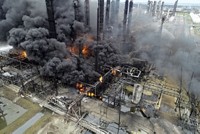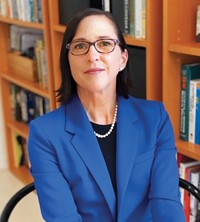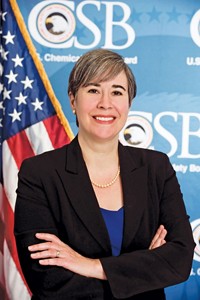Advertisement
Grab your lab coat. Let's get started
Welcome!
Welcome!
Create an account below to get 6 C&EN articles per month, receive newsletters and more - all free.
It seems this is your first time logging in online. Please enter the following information to continue.
As an ACS member you automatically get access to this site. All we need is few more details to create your reading experience.
Not you? Sign in with a different account.
Not you? Sign in with a different account.
ERROR 1
ERROR 1
ERROR 2
ERROR 2
ERROR 2
ERROR 2
ERROR 2
Password and Confirm password must match.
If you have an ACS member number, please enter it here so we can link this account to your membership. (optional)
ERROR 2
ACS values your privacy. By submitting your information, you are gaining access to C&EN and subscribing to our weekly newsletter. We use the information you provide to make your reading experience better, and we will never sell your data to third party members.
Industrial Safety
US Chemical Safety Board remains short-staffed
Board has 1 member and has 10 open investigator positions
by Jeff Johnson, special to C&EN
May 4, 2020

Katherine Lemos, the new chairperson of the US Chemical Safety and Hazard Investigation Board (CSB), faces a sharp learning curve and a lonely start to her term.
A week after she took up CSB leadership on April 23, Lemos found herself working alone when the only other board member, interim chairperson Kristen Kulinowski, announced her departure. Lemos holds a PhD in social psychology and previously worked at the Federal Aviation Administration and National Transportation Safety Board.
The board is supposed to have five members, appointed by the US president and confirmed by the Senate for 5-year terms. But in the 3 years he has been president, Donald J. Trump has only appointed Lemos. Meanwhile, the other members’ terms expired. Kulinowski was required to leave in August, but she left 3 months early to become the director of the Science and Technology Policy Institute, a federal advisory panel.
Trump is no fan of the board, which is charged with investigating chemical–related industrial accidents. His annual budget proposals zeroed out the board’s funding three times. Each time, Congress has overridden his request and extended funding for another year.
Annual funding for the CSB has never topped $12 million. For comparison, the National Transportation Safety Board, which investigates transportation accidents that involve the public and upon which the CSB is modeled, receives 10 times as much as the CSB appropriation.
The board is independent of other agencies and has no regulatory authority. Its task is to objectively investigate chemical–related industrial accidents, find the causes, and make public its recommendations to regulators and industries. It was created in 1990, following investigative failures of US regulatory agencies—in particular, the Occupational Safety and Health Administration and the Environmental Protection Agency.
Some 200 incidents occur each year that qualify for a CSB investigation, but the board has funding adequate to investigate only a handful.
Still, many people in industry, Congress, communities, and unions support the board and its mission, particularly when they are affected by a deadly accident and desire its safety videos and objective reports.
The board is understaffed and far behind in its investigations. It has struggled to fill investigator positions. As of C&EN’s deadline, it had 9 investigative staff and 10 unfilled investigator slots.
Currently 13 accident investigations are unfinished, the CSB says. The incidents killed 24 people, and injured scores of workers and community members. The oldest of the 13 stretches back nearly 4 years. Since it was formed, the board has investigated more than 100 chemical incidents.
CORRECTION
This story was updated on Feb. 13, 2020, to correct Kristen Kulinowski's name. Her first name is Kristen, not Kirsten.





Join the conversation
Contact the reporter
Submit a Letter to the Editor for publication
Engage with us on Twitter